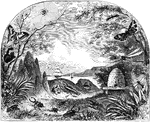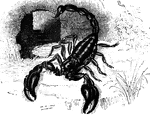Clipart tagged: ‘Scorpion’

Arterial System
"Diagram of the arterial system of A, Scorpio, and B, Limulus. The Roman numerals indicate the body…

Ballista
"Amoung the larger kinds of military weapons in use before the invention of gunpowder. The balista,…

Scorpion Spider Crab
Inachus dorsettensis. "A spider-like crab, or sea-spider, with long slender legs and comparatively small…

Scorpion
Scorpions are any arachnid of the order Scorpionida. Unlike the majority of arachnid species, scorpions…
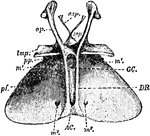
Entosternum
"Entosternum of scorpion (Palamnaeus indus, de Geer); dorsal surface. asp, Paired anterior process of…
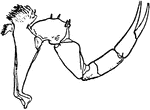
Limulus Polyphemus
"Third leg of Limulus polyphemus, showing the division of the fourth segment of the leg by a groove…

Palaeophonus Hunteri
"Ventral view of a restoration of Palaeophonus Hunteri, Pocock, the Silurian scorpion from Lesmahagow,…

Palaophonus
"Dorsal view of a restoration of Palaeophonus nuncius, Thorell. The Silurian scorpion from Gothland."…
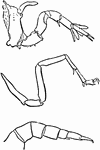
Prosomatic Limb
"Comparison of the sixth prosomatic limb of a recent scorpion (B), of Palaeophonus (C), and of Limulus…

Retinula
"Diagram of a retinula of the central eye of a scorpion consisting of five retina-cells (ret), with…
Rhabdom
"Rhabdom of the same, consisting of five confluent rhabdomeres." — The Encyclopedia Britannica,…
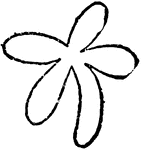
Rhabdom
"Transverse section of the rhabdom of a retinula of the scorpion's central eye, showing its five constituent…

The Scorpio Constellation, with Libra
"The constellation which is prominent in early summer in the skies of the southern United States (where…

Scorpion
Scorpions are found in warm climates, reaching their greatest size in tropical America and Africa.

Scorpion
Scorpions are characterized by having a distinctly segmented abdomen, which passes into the cephalothorax,…

Scorpion
The name of an extensive genus of insects, native to the warm climates of both hemispheres, and belonging…

Scorpion
"Ventral view of a scorpion. Palamnaeus indus, de Geer, to show the arrangement of the coxae of the…

Scorpion
"View from below of a scorpion (Buthus occitanus) opened and dissected so as to show the pericardium…
Scorpion
"Diagram of a lateral view of a longitudinal section of a scorpion. d, Chelicera. ch, Chela. cam, Camerostome.…
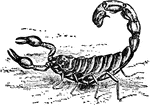
Scorpion
"Drawing from life of the desert scorpion, Buthusaustralis." — The Encyclopedia Britannica, 1910

Scorpion
"Drawing from tlife of the Italian scorpion Euscorpius italicus, Herbst, holding a blue-bottle fly with…

Scorpion
"The same scorpion carrying the now paralysed fly held in its chelicerae, the chelae liberated for attack…

Scorpion Eyes
"Development of the lateral eyes of a scorpion. h, Epidermic cell-layer; mes, mesoblastic connective…
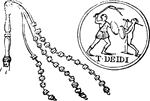
Scourge
"The Furies are generally represented with a scourge, with which to punish the wicked in Tartarus. It…

Sea Scorpion
"Is five to eight inches long; is very voracious, swims rapidly, and si found under stones and sea-weed…
